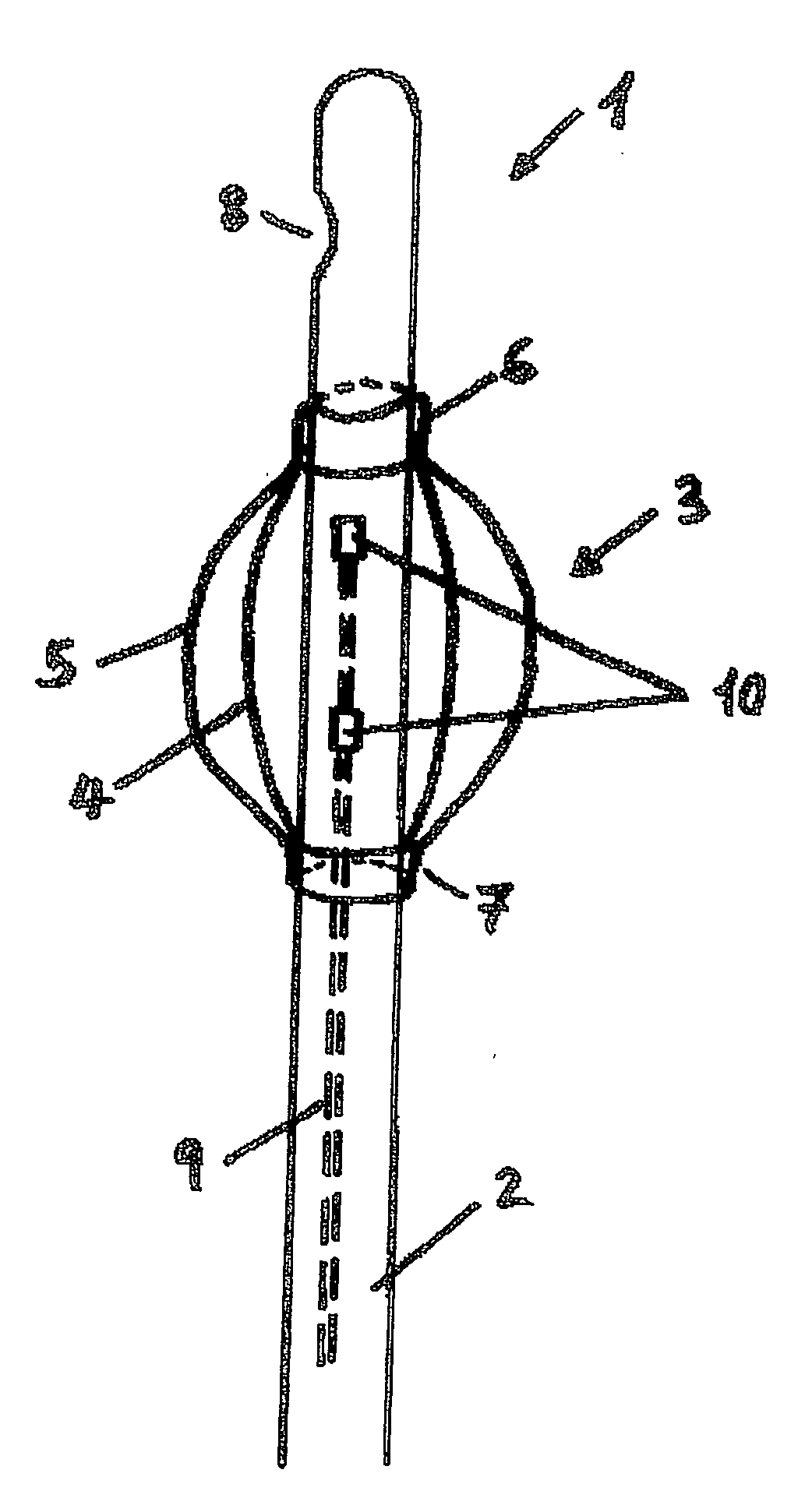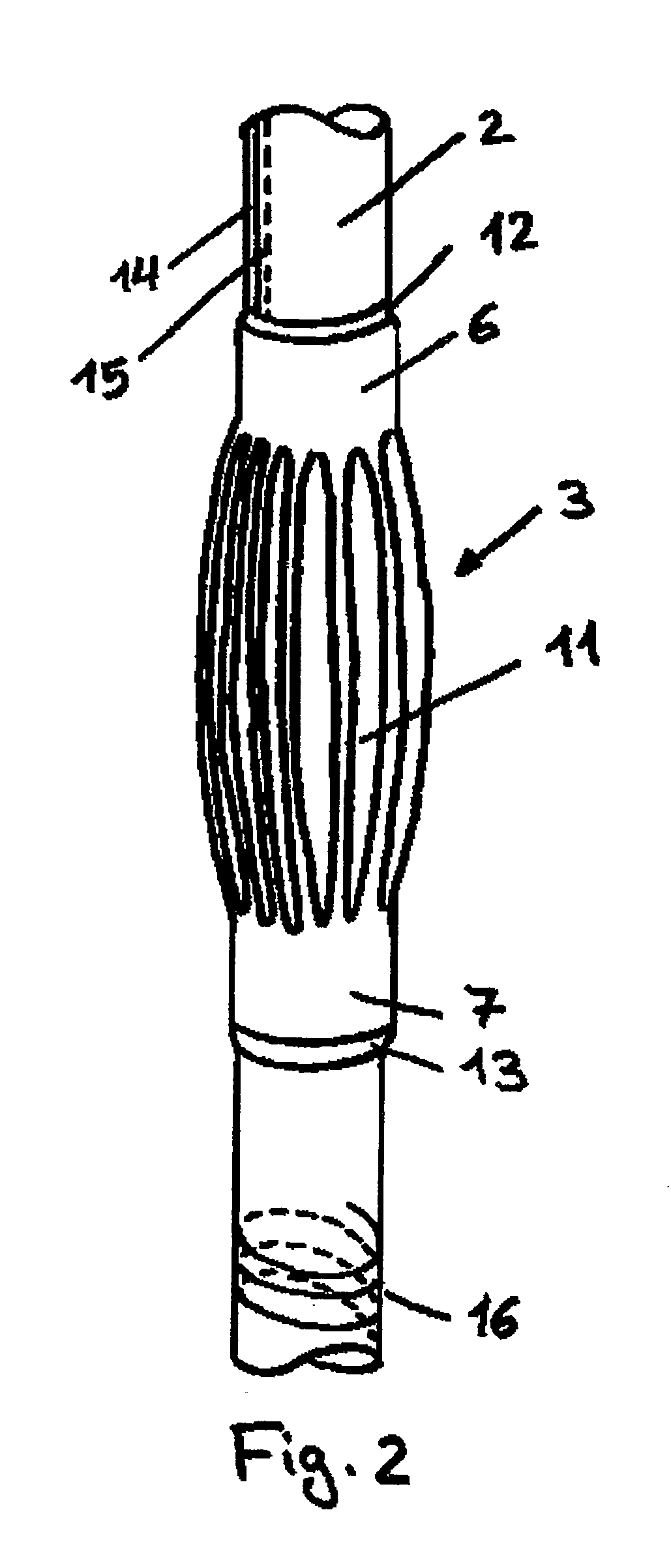Bladder catheter
- Summary
- Abstract
- Description
- Claims
- Application Information
AI Technical Summary
Benefits of technology
Problems solved by technology
Method used
Image
Examples
Embodiment Construction
[0036]FIG. 1 shows the distal end of a bladder catheter 1 in a part-sectional, lateral view. Balloon element 3, which is shown in a sectional view both as base-state balloon 4 (volume at rest) and as inflated balloon 5 (working volume), is fastened to catheter shaft 2. Balloon element 3 is made of a polyurethane-based material; in its form as base-state balloon 4, it has a wall thickness of 5 to 20, preferably of 5-15 μm. It is provided with shaft pieces 6 and 7, via which it is bonded to catheter shaft 2. At its distal end, hollow catheter shaft 2 has opening 8, via which urine can flow out of the urinary bladder. A filling channel 9 situated in the wall of catheter shaft 2 leads to opening or plurality of openings 10 in catheter shaft 2, which is / are placed in the region of balloon element 3.
[0037] Once catheter 2 is introduced into the urinary bladder through the urethra, a suitable fluid, directed through channel 9 and opening(s) 10 into balloon element 3, fills balloon element...
PUM
| Property | Measurement | Unit |
|---|---|---|
| Fraction | aaaaa | aaaaa |
| Fraction | aaaaa | aaaaa |
| Thickness | aaaaa | aaaaa |
Abstract
Description
Claims
Application Information
 Login to View More
Login to View More - R&D
- Intellectual Property
- Life Sciences
- Materials
- Tech Scout
- Unparalleled Data Quality
- Higher Quality Content
- 60% Fewer Hallucinations
Browse by: Latest US Patents, China's latest patents, Technical Efficacy Thesaurus, Application Domain, Technology Topic, Popular Technical Reports.
© 2025 PatSnap. All rights reserved.Legal|Privacy policy|Modern Slavery Act Transparency Statement|Sitemap|About US| Contact US: help@patsnap.com



